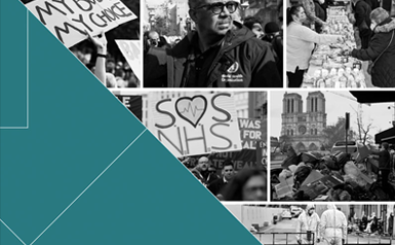The Race and Ethnicity Equity Board (REEB) and the PRCA’s Behind the Mask speaks to much of what I see and hear in the industry. The report reveals the invisible struggle faced by men from minoritized ethnicities working in comms.
It includes a powerful foreword from REEB Vice-Chair and my brilliant colleague, Emmanuel Ofosu-Appiah. The authors call for folks like me to take off the mask and openly share our experiences. Strangely, I’ve been more aware of the mask in my personal life. Early into my career, it often found me changing how I talked amongst friends and family.
One of the anonymous contributors in the study (aka Hasan) describes this lack of true self as a bit too wooden, cold and serious. Thankfully, my nearest and dearest brought me back down to earth with a good ribbing whenever I behaved that way.
Here are three further reflections on themes from Behind the Mask and how these have shaped my career.
1. Channelling motivation into recognition
I was inspired by another contributor (aka Chibueze) and his motivations for entering the industry. Comms offered an opportunity for him to connect with the public and create change that’s ‘beneficial to minorities or different groups’.
This was a major draw for me, and that motivation continues to carry my work. But in the early part of my career, I struggled to channel this energy into gaining recognition for my effort.
Part of this was related to the imposter syndrome experienced by many and highlighted in the report. Others around me were more forward in speaking up or asking for something, be it a promotion or money. I just didn’t know how to engage in such a conversation. Instead, I thought that my work alone should do the talking.
Consequently, when I didn’t feel recognised, I got frustrated and left. What struck me most when handing my resignation was that it came as a complete shock. I showed none of those signals typically seen from people who are unhappy at work.
Frustrated when I didn’t get recognition yet not really knowing how to value myself. But then a pivotal moment came on my return to Edelman as a director, which changed everything.
2. Breaking the cycle of perception fuelling reality
In my first senior leadership meeting, I was already quite nervous walking into the room with twenty plus colleagues and no idea of what to expect. Five minutes in, it felt like everyone else spoke a different language. They obviously didn’t. These were just unfamiliar cues and norms. Regardless, missing and misinterpreting them led me to feelings of isolation and exclusion.
This isn’t to say these experiences for many aren’t real. As you’ll read in the report and countless other studies, they undoubtedly are. They can, however, be amplified in the all too familiar loop in our industry of perception fuelling reality. The cycle becomes harder to break if these cues cannot be identified, particularly in an environment and culture where you’re in the minority.
Fortunately, walking out of that meeting put me on a path that has included leading our DE&I, Citizenship agenda and my recent MD role. At the same time, this amplified my core motivation for entering the industry. Since then, there’s been fewer feelings of exclusion. I’ve also started to know my worth and help others discover theirs.
3. Building empowerment networks
Throughout the report you’ll read about the challenges faced with making connections to help pave the way, especially when there are limited, senior diverse role models.
I’ve had great bosses and advocates support me throughout my career. But as I moved towards more senior positions, my challenge was less about advocacy. Instead, it was knowing how to be a leader ‘like them’, when I was visibly and culturally quite different. What didn’t occur to me was that, while they might not have been inside the organisation, there were many ethnically diverse leaders to learn from.
Today, when I mentor and advise folks facing similar predicaments, I ask them to consider this: as you’ll also read in the report, the 2023 PRCA Census finds that in an industry of over 140 thousand professionals, 12% identify as non-white. That’s an empowerment network of close to 17 thousand comms pros with shared experiences and a tonne of advice and support to offer.
The more we’re connected, the more we can be effective. Though the masks we wear in the workplace might not disappear entirely, there will be more opportunities to take them off.
Hence, I’m grateful to the authors of Behind the Mask for putting such a crucial study on the agenda. It includes many sound recommendations for how comms pros, employers and the industry can come together and bring about change.



